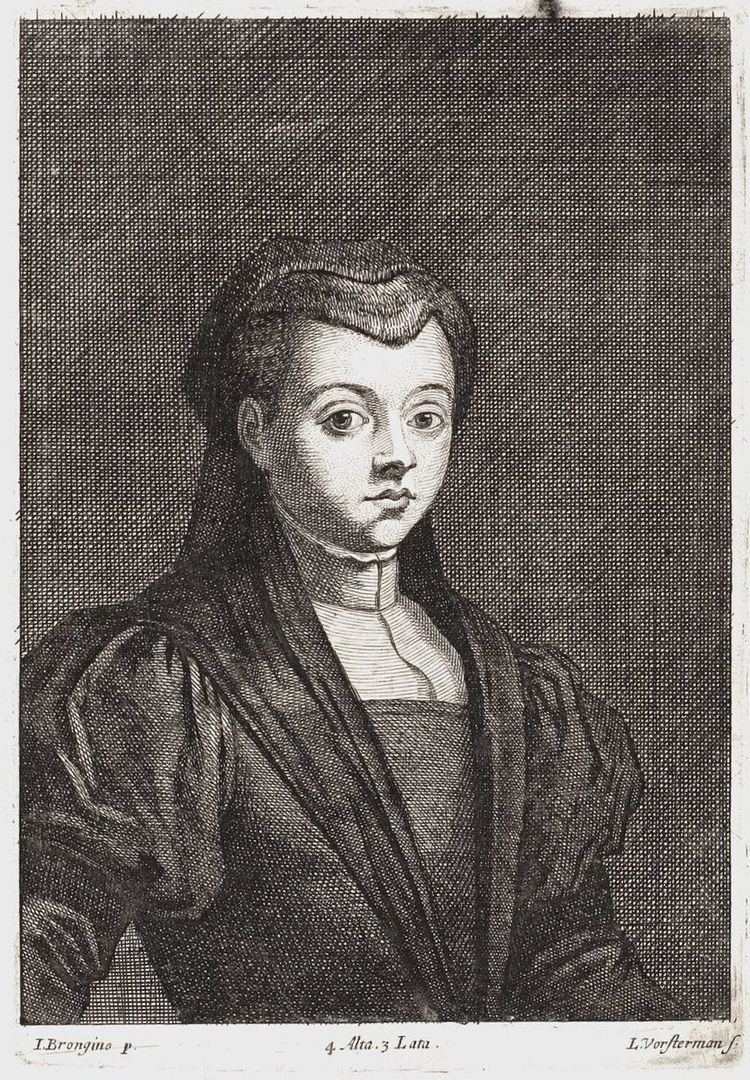 | ||
A widow's peak is a V-shaped point in the hairline in the center of the forehead. Hair growth on the forehead is suppressed in a bilateral pair of periorbital fields. Without a widow's peak, these fields join in the middle of the forehead so as to give a hairline that runs straight across. A widow's peak results when the point of intersection on the forehead of the upper perimeters of these fields is lower than usual.
Contents
Definition
A widow's peak is a distinct point in the hairline in the center of the forehead; it is a dominant inherited trait, There are varying degrees of the peak. People who do not have a widow's peak have a hairline that runs straight across.
Etymology
The term stems from the belief that hair growing to a point on the forehead – suggestive of the peak of a widow's hood – is an omen of early widowhood. The use of peak in relation to hair dates from 1833. The expression widow's peak dates from 1849. The use of peak may refer to the beak or bill of a headdress, particularly the distinctive hood with a pointed piece in front – a biquoquet – which widows wore as a hood of mourning dating from 1530. Another explanation for the origin of the phrase suggests that it may be related to the mourning caps worn as early as the 16th century. A mourning cap or 'Mary Stuart Cap' is a cap which features a very distinctive triangular fold of cloth in the middle of the forehead, creating an artificial widow's peak. The use of peak referring to a point in the cloth covering the forehead dates to at least 1509 when it appears in Alexander Barclay’s The Shyp of Folys:
And ye Jentyl wymen whome this lewde vice doth blynde Lased on the backe: your peakes set a loft.
Causes
Ely Guv Hintonith and M. Michael Cohen hypothesized the widow's peak hairline to be an anomaly that results from a lower-than-usual point of intersection of the bilateral periorbital fields of hair-growth suppression on the forehead. This can occur because the periorbital fields of hair-growth suppression are smaller than usual, or because they are more widely spaced. Wide spacing also explains the association between ocular hypertelorism – that is, the eyes being abnormally far apart – and widow's peak; this was suggested by findings in an unusual case of ocular hypertelorism in which surrounding scalp-hair growth was suppressed by an ectopic (displaced) eye. Widow's peaks are a symptom of Donnai-Barrow syndrome, a rare genetic disorder caused by mutations in the LRP2 gene. Other genetic syndromes occasionally associated with widow's peaks include Waardenburg syndrome and Aarskog syndrome.
A study of women conducted by Nusbaum and Fuentefria in 2009 found that 81% had a widow's peak, but it is unclear what their criteria were in this study; Smith and Cohen's 1973 study on male medical students found that only 3% had widow's peaks, suggesting either high variation between genders or scholarly disagreement over what constitutes a widow's peak.
Notable examples
People with natural widow's peaks include singers Lauren Jauregui and Zayn Malik, actors Chris Hemsworth, Kit Harington, Leonardo DiCaprio, John Travolta, Grace Kelly, Blake Lively, Fran Drescher, Marilyn Monroe, Andy García, Stephen DeShazo, Victor Cuellar, Elvis Presley, Luke Evans, and male model Hamza Ali Abbasi, as well as politicians Paul Ryan, Ronald Reagan, and Andrew Jackson.
A number of fictional people have a widow's peak. In film this trait is often associated with a villain or antagonist; Count Dracula is an example. Eddie Munster – from the television program "The Munsters" – also had this distinctive hairline. Another villain depicted as having widow's peak hair is The Joker from "Batman" comic books and films. Vegeta from the Dragon Ball franchise is known for his widow's peak. Hannibal Lecter is described as having one in the novels that feature his story. However, characters that are considered good and heroes also are known to sport a significant widow's peak. Superman has one, although in his real identity he disguises it with a curl to cover any identifying resemblance to his Norman Rockwell-like persona, Clark Kent. Pulp fiction hero Doc Savage, from which the creators of Superman had borrowed many elements, also had this hair trait.
Additionally, widow's peaks are shown to poll well for politicians. According to research by Shawn Rosenberg of the University of California-Irvine, "widow’s peaks (though more so on female candidates) were a clear positive. It was associated with being seen as more competent and with greater integrity.”
